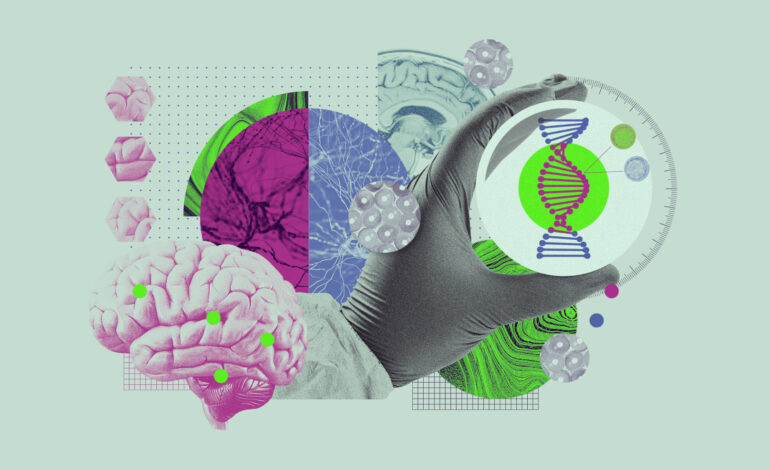Groundbreaking Biological Discoveries Transforming Research Landscape

Recent advancements in biology have unveiled significant breakthroughs that could reshape our understanding of health, species preservation, and research methodologies. These discoveries, documented over the past year, hold promise for treating diseases, enhancing conservation efforts, and even reimagining scientific collaboration.
Significant Progress in Huntington’s Disease Treatment
Researchers have achieved a remarkable milestone in slowing the progression of Huntington’s disease, a hereditary neurodegenerative disorder, by an impressive 75%. The new gene therapy, known as AMT-130, has been developed to combat the disease that leads to a gradual decline in both mental and physical functions. Prior treatment options have been limited, making this development particularly noteworthy.
According to Scientific American, the therapy involves a complex surgical procedure lasting between eight to ten hours, during which a genetically modified virus delivers a crucial DNA sequence directly into brain cells. This innovative method effectively transforms neurons into “factories” that produce the necessary therapy to prevent cell death. While AMT-130 is still undergoing clinical trials, neurologist Victor Sung emphasized the significance of this advancement, stating, “To have something that at least really appears to be having [an] impact is really significant.”
New Insights into Cellular Mechanisms
A groundbreaking study published in the journal Nature Communications reveals that scientists can now observe cellular processes with unprecedented precision. Researchers at Cornell University have developed a technique that utilizes natural proteins as tiny sensors to monitor cellular environments and interactions without resorting to invasive methods.
This advancement allows scientists to track flavoproteins, which exist in many organisms and possess magnetic properties detectable through electron spin resonance spectroscopy. The ability to understand internal cellular functions could lead to new insights into biological mechanisms associated with diseases like cancer. As Brian Crane, a professor at Cornell, noted, this technique could potentially allow researchers to track viral assembly within cells.
Innovative IVF Techniques for Kangaroos
In a significant breakthrough for conservation, researchers have successfully created the world’s first kangaroo embryo using in vitro fertilization (IVF). This achievement could play a crucial role in protecting endangered marsupial species in Australia. Through a method known as intracytoplasmic sperm injection, scientists injected a single sperm directly into a mature kangaroo egg.
As reported by CNN, while the eastern grey kangaroo is not endangered, several other marsupial species face extinction. Research leader Andres Gambini highlighted the broader goal: “Our ultimate goal is to support the preservation of endangered marsupial species like koalas and Tasmanian devils.” Australia has witnessed a higher extinction rate than any other continent in recent history, primarily due to its unique endemic species.
Sequencing Ancient Microbial DNA
A team of scientists has made a remarkable discovery by sequencing the DNA of various mammoths, including 440 that had never been sequenced before. This research, published in the journal Cell, also identified DNA from 310 different microbes living in the animals’ tissues.
While most of the bacteria were found post-mortem, researchers identified six microbial groups that likely coexisted with the mammoths over a million years ago. These findings may provide insights into how Ice Age herbivores adapted to their environments, influencing their digestion, immunity, and resilience to climate changes. As noted by Earth.com, the methods used in this research could be applied to other well-preserved remains, offering a window into ancient ecosystems.
Virtual Labs Pioneering Future Research
A study published in Nature suggests that future research could take place within virtual laboratories, utilizing artificial intelligence to replicate the cognitive processes of top scientists. Researchers trained large language models (LLMs) to emulate scientific reasoning, generating hypotheses and solutions in collaboration with human researchers.
This innovative approach led to the creation of a viable new vaccine basis for COVID-19 using nanobodies. According to Stanford Medicine, these virtual labs could revolutionize research efficiency by facilitating rapid interdisciplinary collaboration. James Zou, an associate professor of biomedical data science, emphasized the importance of teamwork in scientific endeavors, stating, “Good science happens when we have deep, interdisciplinary collaborations.”
These breakthroughs not only exemplify the ongoing advancements in biological research but also highlight the potential for significant impacts on health and conservation efforts globally. As researchers continue to explore uncharted territories, the implications of these discoveries could resonate for years to come.






